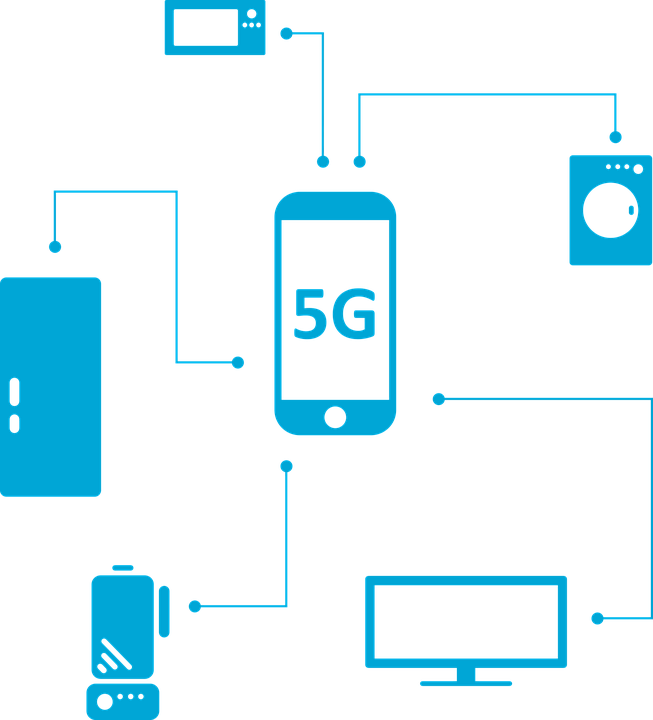5G Internet Dangerous.
5G Internet Danger
FRIGHTENING FREQUENCIES: THE DANGERS OF 5G & WHAT YOU CAN DO ABOUT THEM
By Jody McCutcheon
As the old saying goes, give us an inch and inevitably we’ll want a mile. And certainly, this sentiment is true with technology.
Who doesn’t want faster, bigger (or smaller), more efficient? Take wireless mobile telecommunications. Our current broadband cellular network platform, 4G (or fourth generation), allows us to transmit data faster than 3G and everything that preceded. We can access information faster now than ever before in history. What more could we want? Oh, yes, transmission speeds powerful enough to accommodate the (rather horrifying) so-called Internet of Things.Which brings us to 5G.
Until now, mobile broadband networks have been designed to meet the needs of people. But 5G has been created with machines’needs in mind, offering low-latency, high-efficiency data transfer. It achieves this by breaking data down into smaller packages, allowing for faster transmission times. Whereas 4G has a fifty-millisecond delay, 5G data transfer will offer a mere one-millisecond delay–we humans won’t notice the difference, but it will permit machines to achieve near-seamless communication. Which in itself may open a whole Pandora’s box of trouble for us – and our planet.

More bandwidth – more dangers of 5G
Let’s start with some basic background on 5G technology. Faster processing speeds require more bandwidth, yet our current frequency bandwidths are quickly becoming saturated. The idea behind 5G is to use untapped bandwidth of the extremely high-frequency millimeter wave (MMW), between 30GHz and 300GHz, in addition to some lower and mid-range frequencies.
High-frequency MMWs travel a short distance. Furthermore, they don’t travel well through buildings and tend to be absorbed by rain and plants, leading to signal interference. Thus, the necessary infrastructure would require many smaller, barely noticeable cell towers situated closer together, with more input and output ports than there are on the much larger, easier to see 4G towers. This would likely result in wireless antennas every few feet, on every lamp post and utility pole in your neighbourhood.
Here are some numbers to put things into perspective: as of 2015, there were 308,000 wireless antennas on cell towers and buildings. That’s double the 2002 number. Yet 5G would require exponentially more, smaller ones, placed much closer together, with each emitting bursts of radiofrequency radiation (RFR)–granted, at levels much lower than that of today’s 4G cell towers–that will be much harder to avoid because these towers will be ubiquitous. If we could see the RFR, it would look like a smog that’s everywhere, all the time.

Serious health concerns
First, it’s important to know that in 2011, the World Health Organization’s International Agency for Research on Cancer classified RFR as a potential 2B carcinogen and specified that the use of mobile phones could lead to specific forms of brain tumors.
Many studies have associated low-level RFR exposure with a litany of health effects, including:
- DNA single and double-strand breaks (which leads to cancer)
- oxidative damage (which leads to tissue deterioration and premature ageing)
- disruption of cell metabolism
- increased blood-brain barrier permeability
- melatonin reduction (leading to insomnia and increasing cancer risks)
- disruption of brain glucose metabolism
- generation of stress proteins (leading to myriad diseases)
As mentioned, the new 5G technology utilizes higher-frequency MMW bands, which give off the same dose of radiation as airport scanners. The effects of this radiation on public health have yet to undergo the rigours of long-term testing. Adoption of 5G will mean more signals carrying more energy through the high-frequency spectrum, with more transmitters located closer to people’s homes and workplaces–basically a lot more (and more potent) RFR flying around us. It’s no wonder that apprehension exists over potential risks, to both human and environmental health.
Perhaps the strongest concern involves adverse effects of MMWs on human skin. This letter to the Federal Communications Commission, from Dr Yael Stein of Jerusalem’s Hebrew University, outlines the main points. Over ninety percent of microwave radiation is absorbed by the epidermis and dermis layers, so human skin basically acts as an absorbing sponge for microwave radiation. Disquieting as this may sound, it’s generally considered acceptable so long as the violating wavelengths are greater than the skin layer’s dimensions. But MMW’s violate this condition.
Furthermore, the sweat ducts in the skin’s upper layer act like helical antennas, which are specialized antennas constructed specifically to respond to electromagnetic fields. With millions of sweat ducts, and 5G’s increased RFR needs, it stands to reason that our bodies will become far more conductive to this radiation. The full ramifications of this fact are presently unclear, especially for more vulnerable members of the public (e.g., babies, pregnant women, the elderly), but this technology
Furthermore, MMWs may cause our pain receptors to flare up in recognition of the waves as damaging stimuli. Consider that the US Department of Defense already uses a crowd-dispersal method called the Active Denial System, in which MMWs are directed at crowds to make their skin feel like it’s burning, and also has the ability to basically microwave populations to death from afar with this technology if they choose to do so. And the telecommunications industry wants to fill our atmosphere with MMWs?

Comments
Post a Comment